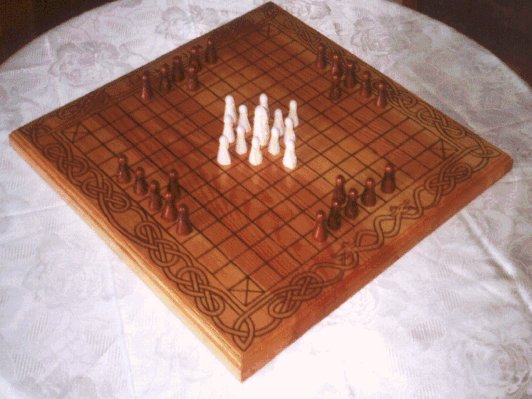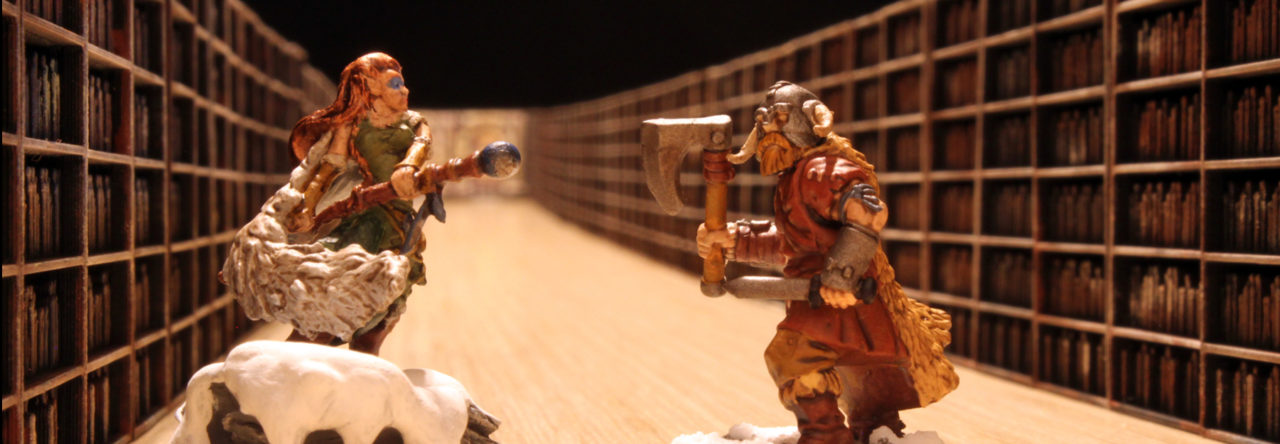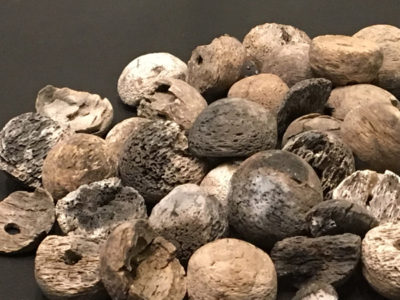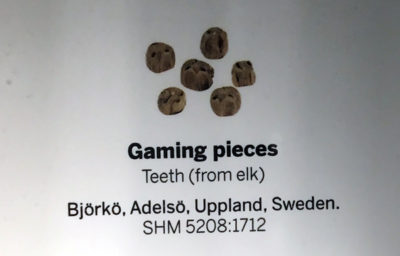A new exhibit opened up at our local History Museum titled “Vikings: Beyond the Legend” and it caught my attention so we decided to check it out. While going through a lot of the standard museum artifacts and the kids were busy talking to several of the reenactors the exhibit had, I stumbled upon a set of artifacts that caught my eye.
Board games! Viking ones! I immediately started reviewing the scant information they had on this and asked around about the pieces but there was very little info.
What little info they did have was that the board was a reconstruction (it would have been nice to see what the original survived as) but the other pieces were all from a grave site and made of varying materials. It was a bit disappointing that there was so little information about these pieces. The exhibit didn’t try to explain what the game might be or even what approximate year they came from.
I got home and started doing some digging and found that the grave sites likely came from this site in Sweden, which dates from the 8th-10th Century AD.
Now that we had a date, it was time to look into the game itself. At the exhibit, I thought it looked similar to some of the Nordic Tafl games like Hnefatafl but the piece layout at the exhibit was strange. That was, until I realized the curators likely just set up some pleasing image and had no clue how to set anything up since they didn’t bother trying to research what games it could have been.

Realizing that they likely just set up something to look nice, the reconstructed board still was smaller than I remembered. Doing a bit more research revealed that the 9 x 9 grid board was commonly thought to be used for the most documented Tafl game variant: Tablut thought to be of Finnish origin.
Ironically, this historical game was made modern in the 70’s by Milton Bradley, called Swords and Shields.

The exhibit also had some pieces that didn’t quite survive their 1000+ year slumber.
I was fascinated also by the dice.
Gaming historians don’t have a complete collection of rules for most Tafl games but a lot of the finds have dice so the belief is they played a role in the games but exactly what, we don’t really know. Conjecture is that it was used to possible dictate the moves a piece can make or whether the piece could move at all.
I find the shape (even broken and partly incomplete on the bottom side) to be amusing. I wouldn’t expect a “fair and balanced” die to appear in the 8th Century but I would have thought they would have tried to make the die a little more square. Maybe they liked the odd weighting tossing this die would yield and I wonder if it played into the game’s strategy as I doubt they would dismiss obvious improbable results for long.
The game pieces weren’t always of antler and bone as these interesting pieces are from Elk teeth instead.
All of this has got me itching to get a copy of some of these Tafl games and try them out. They look like fun abstract games and see the history behind them makes for a fascinating connection to gaming in the past.
Lastly, its also great to see that pimping out games has been around for a very long time. Check out the gilded bronze top on that “king” piece.











